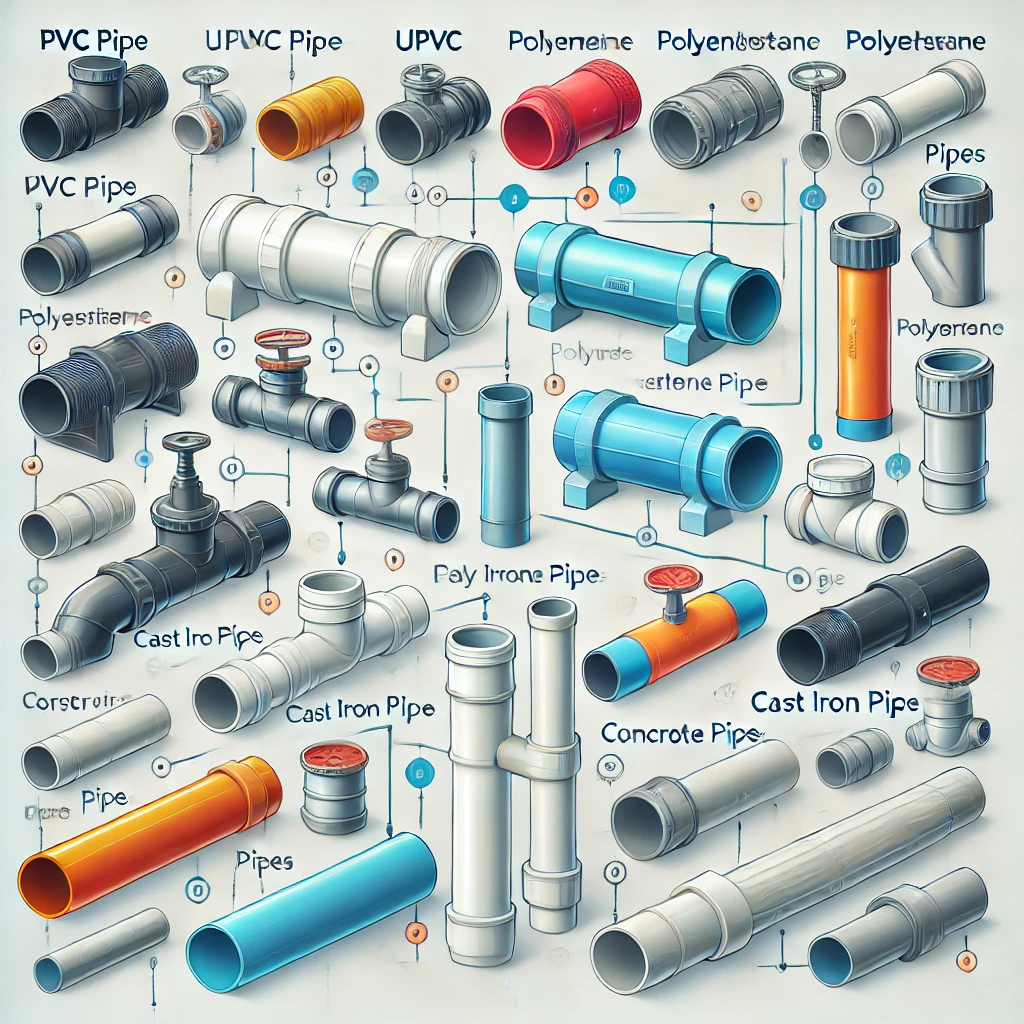Sewerage pipe
Sewerage pipe are an integral part of wastewater collection and disposal systems, designed to transport sewage from buildings to treatment plants or disposal sites. These pipes are manufactured in various types and materials based on their use and installation conditions. Below, information about their features and types is provided:
Types of Sewer Pipes
- PVC Pipes (Polyvinyl Chloride):
- Lightweight
- Resistant to corrosion and chemicals
- Suitable for domestic wastewater
- UPVC Pipes (Unplasticized Polyvinyl Chloride):
- Higher strength compared to PVC
- Suitable for pressurized systems
- Excellent insulation properties
- Polyethylene (PE) Pipes:
- High flexibility
- Resistant to impacts and temperature fluctuations
- Suitable for industrial wastewater and underground installations
- Cast Iron Pipes:
- High strength and durability
- Resistant to mechanical pressures
- Commonly used in large-scale urban projects
- Concrete Pipes:
- Ideal for large urban sewerage pipe
- High resistance to soil weight and pressure
- Galvanized or Metal Pipes:
- Rarely used in sewer systems due to rust issues
- Suitable for specific applications
Advantages and Features
- High Durability: Designed to withstand pressure and harsh environmental conditions.
- Chemical Resistance: Especially important for transporting industrial wastewater.
- Ease of Installation: Many pipes are installed using simple fittings.
Key Considerations in Selection
- Type of Wastewater: Domestic, industrial, or stormwater
- Environmental Conditions: Temperature, soil pressure, and chemical exposure
- Service Life and Cost: Selecting materials based on longevity and budget
Components of a Sewerage pipe
An efficient sewerage pipe includes several components that must be properly designed and installed:
- Main Pipes:
- Transfer wastewater from buildings to the urban Sewerage pipe.
- Usually have a larger diameter than other pipes.
- Branch Pipes:
- Connect household or industrial equipment to the main pipes.
- Smaller in diameter and more flexible.
- Manholes and Access Chambers:
- Used for inspection, maintenance, and clearing blockages in pipes.
- Made of cast iron, concrete, or polymer materials.
- Traps (Siphons):
- Prevent the return of foul odors and sewer gases into buildings.
- Installed under sinks, toilets, and bathtubs.
- Ventilation Pipes (Vents):
- Allow sewer gases to escape and ensure proper airflow.
- Typically located at the top of buildings.
- Fittings:
- Include elbows, tees, crosses, and reducers.
- Facilitate directional changes or the connection of different pipes.
Steps for Sewerage pipe Installation
- Initial Design:
- Define the route, pipe dimensions, and necessary components.
- Assess ground conditions, pressure, and appropriate slope.
- Trench Excavation and Preparation:
- Excavate the path for pipe installation.
- Use sand or gravel as a pipe bed.
- Pipe and Fitting Installation:
- Connect pipes using welding, adhesive, or mechanical joints.
- Maintain a standard slope (usually 1-2%) for proper flow.
- Sealing and Testing:
- Check for leaks using water or air tests.
- Apply gaskets and sealing materials at joints.
- Covering and Protection:
- Cover pipes with sand and soft soil.
- Ensure no excessive pressure is applied to pipes.
Common Issues in Sewerage pipe
- Clogging:
- Caused by deposits, grease, and debris buildup.
- Preventable with regular cleaning and proper trap installation.
- Leaks:
- Due to damaged pipes or incorrect fittings.
- Requires immediate repair to avoid further damage.
- Foul Odors:
- Caused by improper installation of traps or vents.
- Resolvable by checking the gas flow path.
Maintenance Recommendations
- Use cleaning solutions to prevent grease buildup.
- Regularly inspect access chambers and main pipes.
- Avoid disposing of solid waste or large debris into the sewer system.
Our company, a leading provider of water and wastewater transfer solutions across the Middle East, is ready to offer specialized consultations for your projects. Please feel free to contact us for further assistance.

